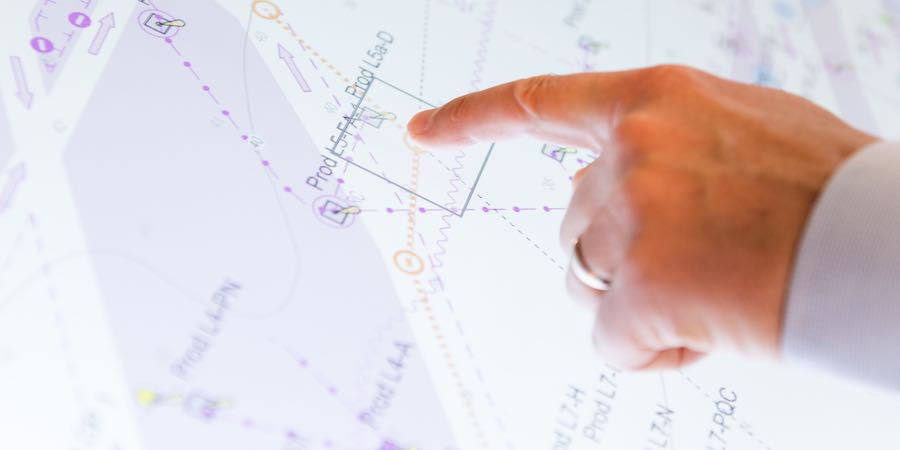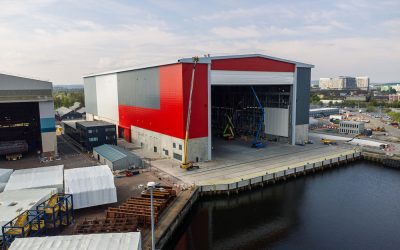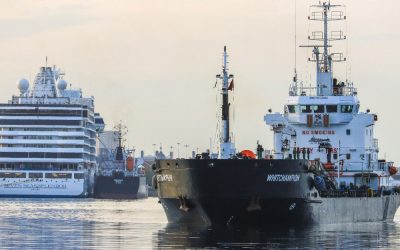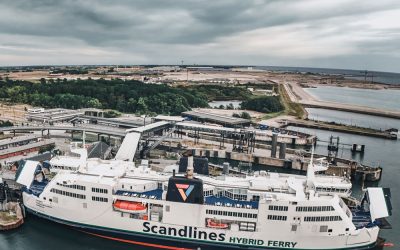When you climb into your car it doesn’t matter if you don’t know how to get to your destination. Thanks to your smart phone, and/or smart vehicle, you can plot a desired location into whatever satellite navigation system you have and, voila, off you roll. At sea, however, it’s a little more complicated.
“Well, for one thing, you have a lot more ‘roads’,” says NAVTOR’s Aslak Dirdal, one of the driving forces behind the development of the Norwegian maritime technology company’s new Auto-Routeing solution. “There’s a huge number of variables and a great many decisions that have to be made. Plotting optimal routes can be a painstaking process, but obviously a crucial one.
“It’s something our customers have been dreaming of simplifying for at least the last decade… if not more.”
Dirdal then sits back to demonstrate how Auto-Routeing, a subscription-based module on NAVTOR’s NavStation platform, works. He zooms in on an exact berth in the port of Southampton and then another in the Port of New York and New Jersey. Clicks a tab, and two seconds later a detailed berth-to-berth route (including voyage distance and duration) emerges.
NAVTOR’s solution is built on the firm’s track record with ENCs, an integrated eco-system of digital solutions (gathering all voyage critical information on a single platform, NavStation) and a constant feed of real-time global AIS data. The result is an intuitive solution that instantly calculates the shortest available routes, down to the very finest details.
“NAVTOR’s Auto-Routeing is unique in that it takes you, if desired, from one individual berth to another, anywhere in the world,” Dirdal states. “It is simple, highly efficient and dependable. Furthermore, if you want to plan from point to point, then that’s fine too. Using the route planning function you can plot from one waypoint to another, press calculate, and all the other waypoints along the route will appear. This can be done from a vessel’s current location, or from any given point for that matter.”
“It’s puts navigators in control,” he says. “And when that functionality is combined with NavStation’s other layers – such as weather routing, environmental regulations, NavArea warnings, passage planning, port data and so on – everything they need is at their fingertips, in one place. We believe it’s a transformational tool.”
The suggested route can be compared to alternatives (also generated by the module’s proprietary algorithm at the touch of a button), with navigators reviewing and refining suggestions to meet their exact needs. For example, ‘blockers’ can be activated along the way to avoid areas, such as busy straits, shallow water, port entries or canals, additional ports or waypoints can be added, cargo specified, and all routeing alternatives controlled. Suggestions can also be saved for further route- and passage planning purposes.
And crucially, Dirdal adds, it is “a living thing”.
“We’re not just releasing this to the market and that’s that,” he stresses. “This is constantly consuming data and updating on a weekly basis, leading to continual improvements and optimal accuracy.
“It’s important that this is a solution the whole industry can trust (NAVTOR has e-Navigation and performance monitoring and optimisation products and services on over 8,000 vessels), so we’re investing in continual refinements and development.”
Driving development
Børge Hetland, NAVTOR’s chief commercial officer describes the development of the module, which launched last year, as “a perfect demonstration of both NAVTOR’s vision and ability”.
He comments: “We always want to be the forefront of innovation, driving change. But not for ourselves, not at all. It’s our mission to listen to this industry, understand our customers’ key challenges and see if we can design smart, digital solutions that solve them, delivering competitive advantage.
“Shipping is complicated and, some would argue, constantly increasing in complexity; with new regulations, commercial demands and operational challenges. However, with innovations like Auto-Routeing we can turn that on its head, automating tasks, integrating planning and greatly simplifying life at sea. That benefits navigators, of course, but it also drives efficiencies for shipping companies, and that impacts positively on the bottom line.”
Hetland concludes that the rapid uptake of the solution, and ongoing positive feedback, demonstrates the demand for such a breakthrough. “But then that’s not too unexpected,” he jokes. “After all, they’ve been dreaming about this for some time!”






